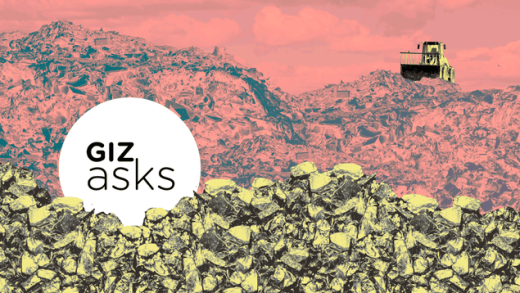In the summer of 2012, I joined my photographer-writer-artist friend Kaeti Wigeland in presenting The Ekphrastic Poster Show at a coffee shop that serves as a local gallery. Her photos paired with my ekphrastic poems and her ekphrastic poetic captions paired with my photos made for a true artistic collaboration. Ekphrasis comes from the Greek and literally means “out of speech or expression.” As a rhetorical method, it refers to a literary description of visual art. However, I’ve always thought of it as more enveloping: One art is all art; all art is one art. Ekphrastic poetry is simply that.
I’m not the only writer who thinks this way. From music that invokes nostalgia to paintings that offer philosophical views of humanity to old stories that become new again, crossing genres happens.
According to Poets.org, ekphrasis appears in works like The Illiad. These tidbits of ekphrastic writing appear in praise of the artwork on household items of great craftwork as wells as the carvings and etchings on weapons. In these ways, art appears in layers. You’ve got your craft guild making an urn. You’ve got your artist guild adorning the earn. Then you’ve got your bard, writing about the artwork on the urn. (This is like a Shrek moment: onions have layers; ekphrastic poetry has layers).
Traditional Ekphrastic Poetry Vibe
A lot of early ekphrastic poems focus on visual artwork alone. They write in praise of it by describing it using spatial relationships: top to bottom, left to right, corner to corner, inner to outer, and vice versa for each of these pairs. The language refers to prominent shapes and colors. The lines usually use specific active verbs. These old school poems do not go beyond the artwork much if at all.
William Carlos Williams’s Ekphrastic Poem “The Dance“
In this ekphrastic poem, the speaker describes Brughel’s painting “The Kermess.” WCW repeats the words “round and round” and refers to round objects in the painting like bagpipes and bellies (which is also alliteration!).
John Ashbery’s Ekphrastic Poem “Self-Portrait in a Convex Mirror“
The speaker here describes the scene in a reflection of a mirror: “A few leaded panes, old beams / Fur, pleated muslin.” Ashbery uses interesting verbs to describe movement in an otherwise still picture: objects “run together / In a movement…which swims / Toward and away like the hand.” The inspiration for this ekphrastic poem is Parmigianino’s Self Portrait circa 1523–4.
A More Modern Ekphrastic Poetry Vibe
Some of the more modern forms of ekphrastic poetry follow some of the elements of this older trend but also allow for interpretations and storylines that assume what happens before or after the scene. This form of ekphrastic poetry also shows connections between the artwork and universal themes. Also, the poems go beyond the traditional painting or statue to find art inspiration in song and film.
Paisley Rekdal’s Ekphrastic Poem “When It Is Over It Will Be Over“
The fun aspect of this ekphrastic poem is that it begins with that hard ekphrastic style of description and then whirls into something beyond the drawing by Troy Passey. That whirl of theme follows the whirl of the drawing that seems to spin. Remember those layers? The drawing and ekphrastic poem take a line from the poet Edna St. Vincent Millay. That means it’s an ekphrastic poem based on a visual drawing based on a poetic line. Layers!
Ocean Vuong’s Ekphrastic Poem “Aubade with Burning City“
Vuong interlaces lyrics from Irving Berlin’s “White Christmas” with a scene of Vietnam refugees. The juxtaposition of the song and scene creates an eerie, unsettling vibe. (Juxtaposition is a kind of comparison in which two unlike items appear near each other to show how their apparent striking contrast actually has similarities). Also, an aubade is a poem that usually praises morning. This ekphrastic poem begins in the morningtime.
The journal The Light Ekphrastic focuses on ekphrastic poetry. Each issue reveals collaborative efforts between visual artists and poets. In the February 2019 issue, we find more layers with artist Katie Feild and poet .chisaraokwu. Feild created an animation entitled “Ultima Kid Mitts.” That led to .chisaraokwu.’s ekphrastic piece “A Blip & A Wrinkle.” It doesn’t end there. .chisaraokwu. offered a poem entitled “of adolescent love later in life (the lunar cycle).” Feild then created another animation called “99tomorrows_loop.”
Write Your Own Ekphrastic Poem
Try your hand at creating an ekphrastic poem with artistic inspiration.
Follow Traditional Ekphrastic Poetry
Find a painting or sculpture that strikes you in some way. Write down everything you see about it — color, size, shape, texture — from top to bottom. Then write down all your observations from left to right. Do it again from the center outwards.
Now review your observations and choose which spatial set up you want to follow. Does bottom to top help with revealing the artwork? Does diagonally cause intrigue?
Write 12–14 lines that use very specific verb choices to show the relationship between objects, colors, and shapes. You can reference the title and artist within the poem or make an epigraph that indicates your muse.
Interpret and Connect Beyond The Artwork With Newer Ekphrastic Poetry Style
Find a painting, drawing, scultpture, wall of grafitti, short film, or other piece of artwork. Immediately write down your reason for choosing it. Think about how it makes you feel, what the process of creating that artwork might have been like, and any deeper meaning that you feel it shows.
Then write down elements of the artwork that strike you the most: colors, shapes, location, specific words.
Create a poem of 15–20 lines that describes your relationship to this piece of art. Think about the creator as well as the art piece, and show how elements of that artwork in any order connect to something beyond it.
For more about poetry:
Here are poetry books for beginners.
Here are 50 of the best poetry books.
Also, check out the archives.














